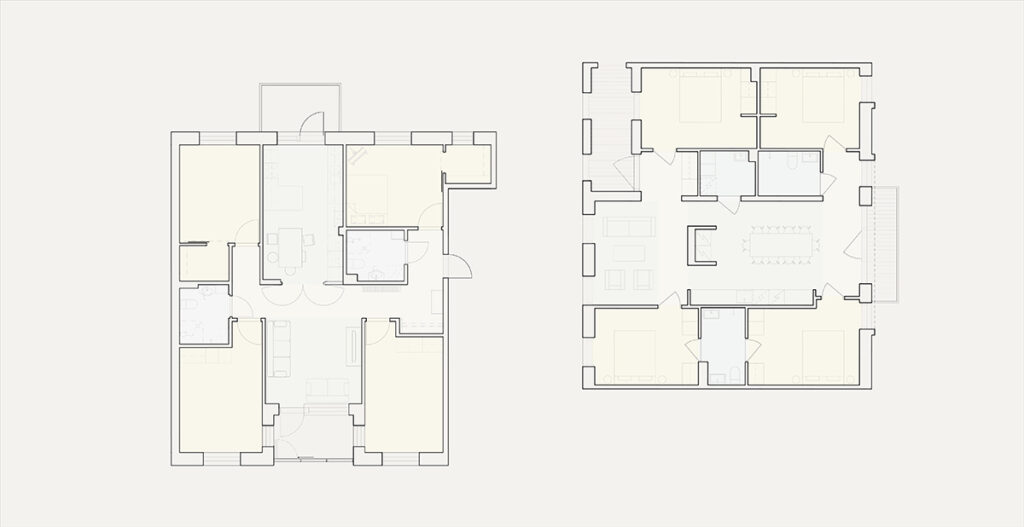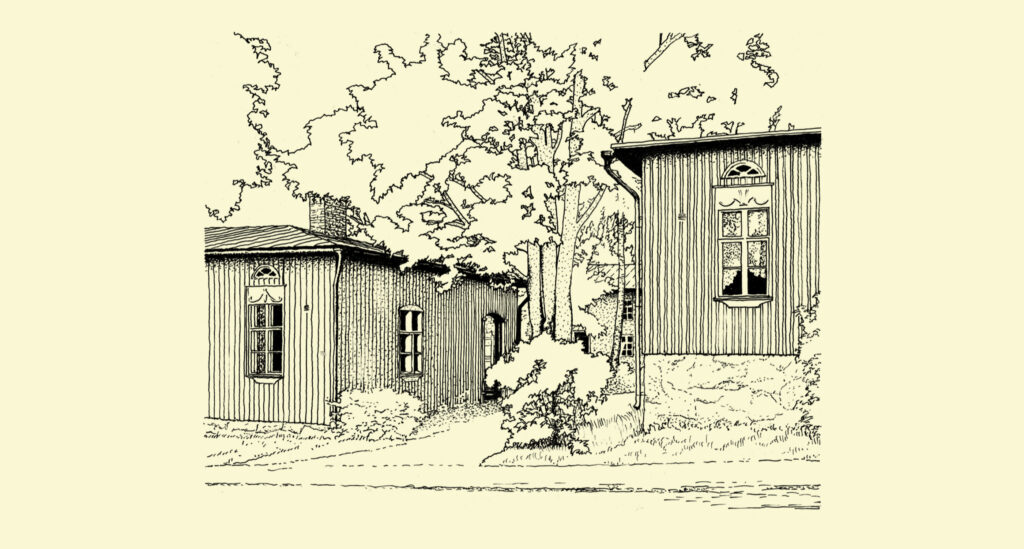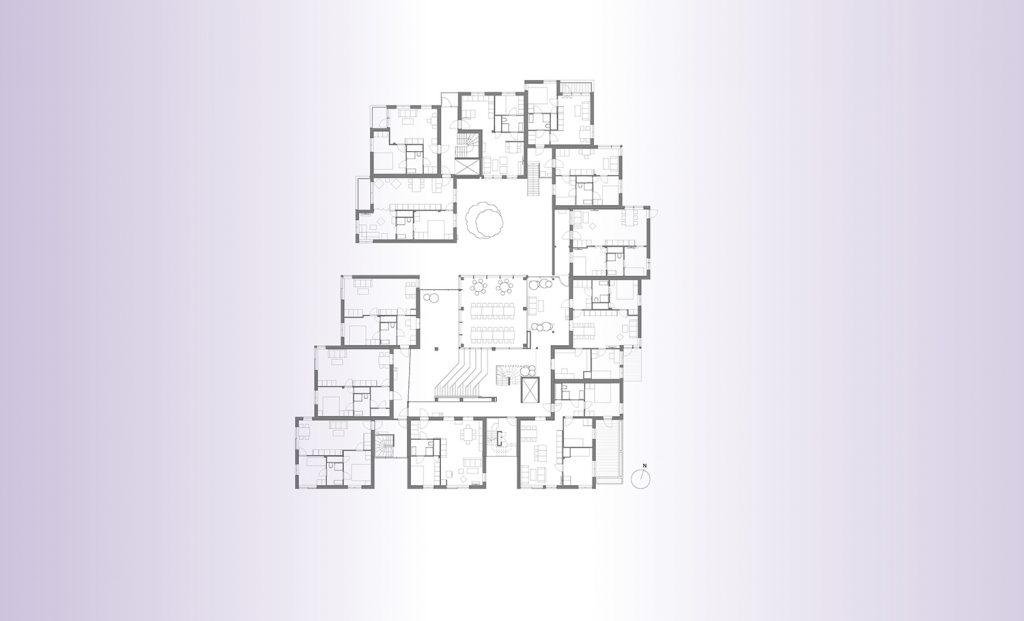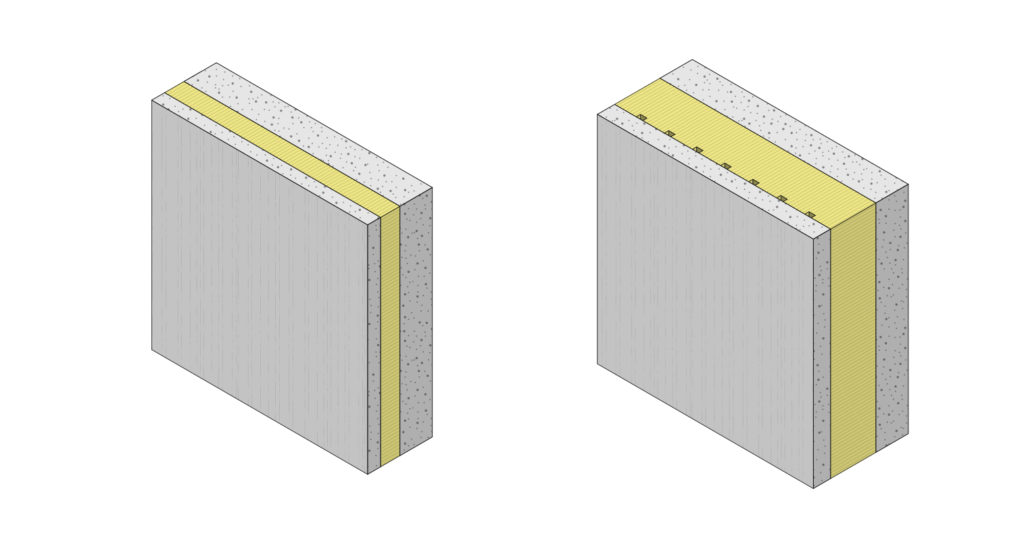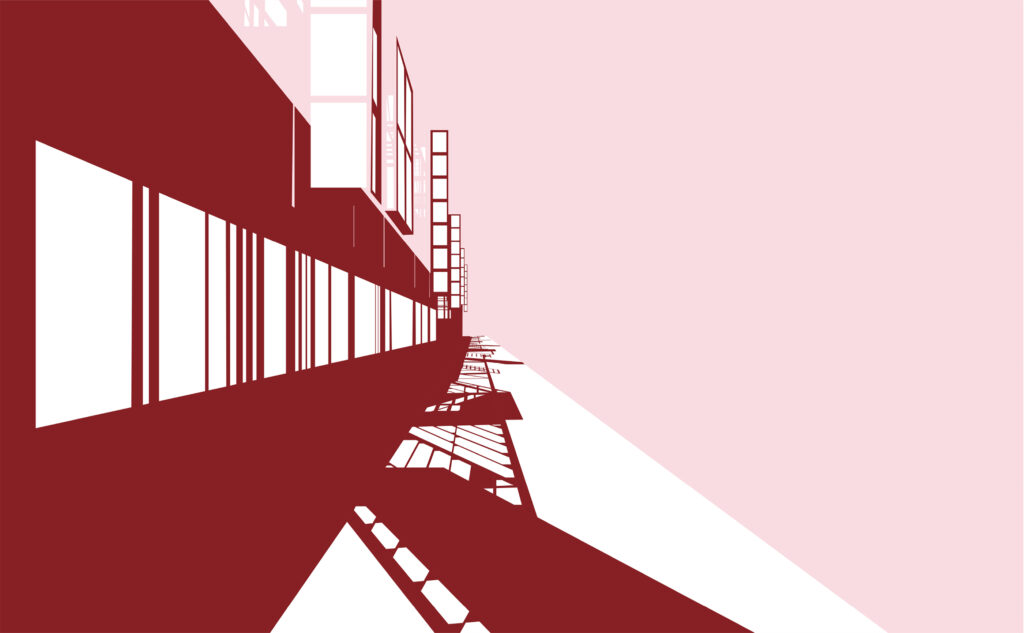What Makes a Sustainable Living Environment? – Researchers Compiled a Checklist

Several new trends in housing production are worrying experts, as these trends are compromising dwellers’ health and well-being as well as the longevity of the apartments. Researchers at the Tampere University School of Architecture compiled different aspects of housing design quality into a checklist.
Due to the recent focus on increasing urban densities, concerns are being raised both around the world and in Finland about a reduction in the design quality of apartment blocks to meet the needs of current and future citizens1. This matters, because there are about 3.2 million homes in Finland of which 47% are in apartment blocks, and most new homes are now multi-family apartment blocks2. From the perspective of sustainability, a dense urban structure is considered to create benefits through the energy- and spatial-efficiency of apartment blocks, as well as through the availability of services, goods and public transport. In addition to these environmental perspectives, socially sustainable housing design must meet the criteria of basic housing needs, that is, to create a safe environment for people to pursue independent activities, social participation and live a healthy life.3
Housing functionality and suitability for different and changing needs are crucial for long-term spatial, ecological and social sustainability, and are also stipulated in Finland’s national building regulations.4 Yet, several new trends in Finnish housing production – such as deeper building plans, poorly daylit apartments5, and apartments that do not meet residents’ needs over time or for a diversity of people6 – are worrying. In particular, a “double-loaded corridor”, meaning a long building corridor with apartments on both sides, has several knock-on effects on apartment design: it creates a larger proportion of single aspect apartments, typically reducing access to natural light and views. Moreover, the ever deeper building blocks lead to the creation of deep plan apartments, increasing internal circulation. All of these aspects decrease the apartment’s furnishability and adaptability potential.
These issues are typically more pronounced in small studio apartments, which take up 24% of the Finnish national housing stock, and the current production of one-room studios is as much as 40%.7 Additionally, apartment buildings set in a dense urban structure typically also have mediocre, shaded, tight outdoor spaces that are hard to use or spend time in during most times of the year.


Why Housing Design Quality Matters
As we spend around 70% of our time in our homes, it is crucial that this environment has a positive effect on our health and well-being.8 With an ageing population and increased working from home, this is even more important. Housing also involves the apartment block and the surrounding neighbourhood, not just the internal environment of the single apartment – this is why we refer to the term living environment. Good housing design qualities affect resident well-being positively and support desirable, sustainable and healthy homes and neighbourhoods that meet the needs and expectations of dwellers. Poor housing design quality can lead to, for example, reduced sleep, greater anxiety, loneliness and an increase in home energy use.9
Based on our research, we synthesised and grouped the key aspects of sustainable housing design qualities into four themes and into the scales of apartment, building and neighbourhood: indoor environmental quality, spatial configuration and organisation, furnishability and transformability, as well as social infrastructure. We suspect that none of these aspects are new or surprising, yet many have been forgotten and are often neglected in current housing production. Many of the scales and qualities are interconnected and influence one another and should be considered in a way that takes the surrounding social and environmental context into account.
Download the Sustainable Housing Quality Checklist (pdf) →

1
INDOOR ENVIRONMENTAL QUALITY (IEQ) on the apartment scale includes access to daylighting, sunlight and different orientations, views of the sky and visual connections to nature, providing seasonal awareness in support of residents’ health and well-being.10 It also includes thermal and acoustic comfort, as well as good indoor air quality. Especially in a changing climate, the prevention of summer overheating is important; good summer IEQ can be achieved through summer solar shading, vegetation, and natural night-time ventilation.
The key design principles include shallow plan buildings and layouts, and windows in more than one direction, to enable good daylight, visual outdoor connections, winter solar gain and summer-time cross ventilation, while also supporting good furnishability and spatial adaptability. Ideally, balconies are spatially connected to the main living spaces. However, if they are located in front of the main or sole window, this reduces the access to natural light.11 In that case, either larger or more windows are required, or balconies should be staggered.
In addition, a careful placement of multiple windows supports future adaptability by e.g. enabling the splitting of the room into two, each with a window. In external spaces on the building and neighbourhood scales, good IEQ includes physical access to sunlit and sheltered outdoor spaces such as courtyards and urban nature.

2
The housing design qualities related to SPATIAL CONFIGURATION AND ORGANISATION aspects are about a choice and diversity of apartments and layouts in the apartment, building and neighbourhood in order to ensure that a diversity of people’s spatial and social needs can be met within the community. In the apartment block, the spatial organisation of double-loaded corridors is undesirable, because it creates more apartments that face in one direction only. Particularly with deep apartment layouts, typically more than 6 metres, this creates poorly daylit spaces, further exacerbated by balconies.12
On the apartment scale, good spatial configuration and organisation principles incorporate the provision of sufficient space –including both social and private spaces, storage spaces and private outdoor space – as well as usable spatial arrangements in the entrance area, effective circulation areas and connections between rooms. Central entrance access into the apartment is desirable in order to avoid long, dark and unusable apartment corridors.
While often difficult to achieve, a usable entrance zone with natural light is welcoming and enables it to be used for other purposes, e.g. as a future study space or play area. The overlapping of the necessary circulation areas ensures that the furnishable floor area is effectively used and allows different furnishing options. As an example of this, a circulation area to the balcony can be part of an entrance circulation area or overlap partly with a space that is needed in order to use the kitchen cupboards. Ideally, circulation areas are also concentrated in the darker parts of the room, which are less desirable to use and furnish for the main purpose of the room.13
3
FURNISHABILITY AND TRANSFORMABILITY refer to the use of space in multiple ways. For furnishability, this includes the ability to place furniture in more than one position, and for transformability, it entails changing the connections between rooms, separating a private room, or even dividing or combining apartments without altering load-bearing elements.
Having multi-paths, or multiple doors into the apartment and between rooms, enables accessing and using spaces in different ways and changing their levels of privacy. Unused doors can remain closed and have furniture placed in front of them. Being able to easily make temporary or longer-lasting changes in the home and its external, shared community spaces means that residents do not have to move home if their situation changes. It also supports stability and diversity, as well as reduces fluctuations in communities.14
4
SOCIAL INFRASTRUCTURE refers to opportunities for people to interact through the provision of nearby everyday indoor or outdoor shared spaces and functions within the apartment block or in the surrounding neighbourhood. This supports individual well-being and cohesion.15 Social interactions are supported in neighbourhoods that are mixed-use with a diversity of public open space, built form, and local services on the human scale. They are pedestrian-oriented with access to high-quality green space, biodiverse environments, views of nature and the neighbourhood and have a pleasant microclimate, i.e., both sunlit and sheltered entrances and public spaces.16
On the building scale, physical access from the apartment to shared spaces and urban nature supports social connections. Conversely, insufficient space and qualities of long double-loaded corridors discourage opportunities for neighbours to interact or spend time socially. Such spaces are also hostile to those having to navigate with prams or wheelchairs and might isolate a portion of the community. All of the social spaces, both in a neighbourhood and on the building scale, need to be physically and socially accessible for a diversity of people – meaning not just play areas for children but also adaptable and optional functions for adults.



Towards More Adaptable Housing Design and Living Environments
Diverse and adaptable spaces are common qualities across all the scales and themes of sustainable housing design. Indeed, given that housing is under increasing pressure to accommodate changing situations and demographics, the provision of diverse and adaptable housing is crucial.17 While this is required in the Finnish building regulations18, it is rarely a reality in current housing production.19 Failure to create adaptable apartments and buildings can also lead to premature building obsolescence and, in the worst cases, even to building demolition – this is against sustainability and circular economy basic principles.20 Moreover, the building design affects the apartment layout, and, is in turn, determined by the city plan which stipulates the buildable rights. This highlights that we need to get the urban scale right first21 and consider all the sustainable housing design qualities carefully together.
The table of key housing design quality indicators is intended as a reminder in one’s own housing designing process, or when evaluating existing housing developments. By its very nature, a summary table cannot be all-encompassing but it can give an overview of what the concrete key considerations are in sustainable housing design at this very moment. The features highlighted in the table are not explicitly regulated, but are paramount for creating sustainable living environments. ↙
Download the Sustainable Housing Quality Checklist (pdf) →
The writers are part of the Sustainable Housing Design research group Asutut at Tampere University, which conducts user-centric research that responds to societal challenges in contemporary housing design in a rapidly changing world. The research this article is based on was part of the Housing in Change project supported by YH Kodit Oy and an organisation called Länsi-Suomen Yleishyödyllinen Asuntosäätiö (Western Finland Non-Profit Housing Foundation) , and the Academy of Finland funded Real Estate and Sustainable Crisis Management in Urban Environments (RESCUE) study.
1 Stephen Finlay et al.: The way we live now: What people need and expect from their homes. Raportti. Royal Institute of British Architects 2012.
John Punter: “The recession, housing quality and urban design”. International Planning Studies 15(3) 2010, 245–263.
Henna Helander:”Korjausliike kohti hyvinvointia”. Blog of the Finnish Association of Architects 23.1.2020.
2 Asunnot ja asuinolot 2021, asunnot talotyypin, käytössäolon ja rakennusvuoden mukaan. Statistic Finland 2021.
3 Henna Luoma-Halkola ym.: ”Asumisen tarpeet – peruslähtökohta”. Ketterän asumisen keittokirja online publication (ed. Jyrki Tarpio et al.) 2019.
4 Ympäristöministeriön asetus asuin-, majoitus- ja työtiloista 1008/2017.
5 Henna Helander: ”Korjausliike kohti hyvinvointia”. Blog of the Finnish Association of Architects 23.1.2020.
Sini Saarimaa & Sofie Pelsmakers: ”Better living environment today, more adaptable tomorrow? Comparative analysis of Finnish apartment buildings and their adaptable scenarios”, The Finnish Journal of Urban Studies 58(2) 2020, 33-58.
6 Taru Lehtinen et al.: Asuminen muutoksessa: Asunnot ja naapuruston jaetut tilat asukkaiden arjessa. Tampereen yliopisto, arkkitehtuurin yksikkö, ASUTUT-tutkimusryhmä. Loppuraportti. 2022.
Anne Tervo & Jukka Hirvonen: ”Solo dwellers and domestic spatial needs in the Helsinki Metropolitan Area, Finland”, Housing Studies 35(7) 2019, 1194–1213.
7 Sofie Pelsmakers; Sini Saarimaa & Mari Vaattovaara: ”Avoiding Macro Mistakes: Micro-homes in Finland Today”, Nordic Journal of Architectural Research 3/2021, 92-127.
Hanna Karikallio et al.: PTT raportteja 262: Pienten asuntojen osuus asuntotuotannossa ja vaikutukset asuinalueiden eriytymiseen, Pellervon taloustutkimus 2019.
Terttu Vainio et al.: Asuntotuotannon laatumuutokset 2005-2020, Korkeampaa, tiiviimpää, energiatehokkaampaa. Ympäristöministeriön julkaisuja 2021:29.
8 Nick Baker & Koen Steemers: Healthy homes: Designing with light and air for sustainability and wellbeing. Riba Publishing 2019.
9 i.e. Michael Keall et al.: “Assessing housing quality and its impact on health, safety and sustainability”. Journal of Epidemiology and Community Health 64(9) 2010, 765–71.
Anne Tervo & Johanna Lilius: “Urbaanien yksinasujien asuintilatoiveita”. Finnish Journal of Urban Studies 55(1), 2017.
Nick Baker & Koen Steemers: Healthy homes: Designing with light and air for sustainability and wellbeing. Riba Publishing 2019.
10 Hans Drexler & Sebastian El Khouli: Holistic housing: Concepts, design strategies and processes. Edition Detail 2012.
Nick Baker & Koen Steemers: Healthy homes: Designing with light and air for sustainability and wellbeing. Riba Publishing 2019.
Sofie Pelsmakers: The Environmental Design Pocketbook. Riba Publishing 2015.
11 Taru Lehtinen et al.: Asuminen muutoksessa: Asunnot ja naapuruston jaetut tilat asukkaiden arjessa. Final report. Tampere University, Faculty of Built Environment, Unit of Architecture, Asutut research group. 2022.
12 ibid.
13 ibid.
14 Paula Femenias & Faustine Geromel: ”Adaptable housing? A quantitative study of contemporary apartment layouts that have been rearranged by end-users”. Journal of Housing and the Built Environment 35 2019, 481–505.
Sofie Pelsmakers & Elanor Warwick: “Housing adaptability: new research, emerging practices & challenges”. Buildings and Cities 3(1) 2002, 605–618.
15 Nick Baker & Koen Steemers: Healthy homes: Designing with light and air for sustainability and wellbeing. Riba Publishing 2019.
Sofie Pelsmakers et al.: Designing for the Climate Emergency: A Guide for Architecture Students. Riba Publishing 2022.
16 David Sim: Soft City: Building Density for Everyday Life. Island Press 2019.
Nick Baker & Koen Steemers: Healthy homes: Designing with light and air for sustainability and wellbeing. Riba Publishing 2019.
17 Paula Femenias & Faustine Geromel: ”Adaptable housing? A quantitative study of contemporary apartment layouts that have been rearranged by end-users”, Journal of Housing and the Built Environment 35 2019, 481–505.
Sofie Pelsmakers & Elanor Warwick: “Housing adaptability: new research, emerging practices & challenges”, Buildings and Cities 3(1) 2002, 605–618.
18 Ympäristöministeriön asetus asuin-, majoitus- ja työtiloista 1008/2017.
19 Sini Saarimaa & Sofie Pelsmakers: “Better living environment today, more adaptable tomorrow? Comparative analysis of Finnish apartment buildings and their adaptable scenarios”. Yhdyskuntasuunnittelu 58(2) 2020, 33–58.
20 Satu Huuhka & Inge Vestergaard: “Building Conservation and the Circular Economy”. Journal of Cultural Heritage Management and Sustainable Development 10(1) 2019, 29-40.
Sofie Pelsmakers; Jenni Poutanen & Sini Saarimaa: “(Hybrid) Architecture in and over time”. In Ecologies Design: Transforming Architecture, Landscape and Urbanism (eds. Maibritt Pedersen Zari, Peter Connolly, Mark Southcombe), Routledge 2020.
21 Sini Saarimaa & Sofie Pelsmakers: “Better living environment today, more adaptable tomorrow? Comparative analysis of Finnish apartment buildings and their adaptable scenarios”. Yhdyskuntasuunnittelu 58(2) 2020, 33–58.
